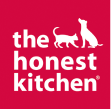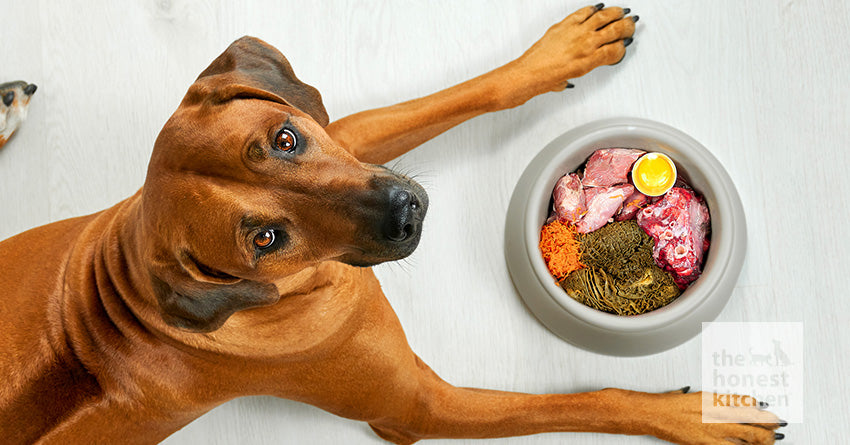As you consider the dog food you are going to feed your pet, you will soon discover that there is a huge range of ideas about what is and is not the best pet food for dogs. While you can go to the grocery store and easily find pet food labeled as being "specially formulated" for your dog’s life stage, a growing number of dog owners are opting to make their own dog food in hopes of providing more natural food for their pets.
These natural diets are growing in popularity as pet owners try to avoid unnecessary fillers, additives, and preservatives in their pet’s food. Yet even with natural diets, there are many different ideas about what constitutes the best, most balanced diet for a dog.
You may find it confusing to try to decipher these options and settle on a natural diet you feel comfortable feeding your pet. This guide is a great starting point and will discuss a few popular approaches to serving your pet a natural diet.
What Is the BARF Diet for Dogs?
The BARF diet is a popular dog food model in the raw and natural food camp. Though the name sounds a bit crass, this is actually a fairly balanced approach to feeding your dog a less processed diet.
BARF is an acronym that stands for “Biologically Appropriate Raw Food.” This natural dog diet model was created by a veterinarian and is intended to closely mimic what a dog’s diet would be in the wild. It uses a mixture of muscle meat, bones, vegetables, and organ meats that would be similar to what dogs' wild ancestors ate.
This diet developed from the research and work of Dr. Ian Billinghurst, who published a book on it in 1993 and then again in 2001. This diet is typically more balanced than a straight raw food diet, offering muscle meat, meaty bones, fruits, and vegetables to try to make the meal balanced. It also recommends supplements to add vitamins, enzymes, essential fatty acids, probiotics, and herbs to the diet to meet a dog’s nutritional requirements and enhance health and wellness.
The general rules for the ratio of foods in the BARF diet are:
- 70% muscle meat
- 10% raw meaty bones
- 10% organ meat
- 10% produce, like fruits, vegetables, and grains
Keep in mind that these are general percentage recommendations to provide a balanced diet to adult dogs. You may find recipes that vary on these percentages a little, which is generally considered fine with the BARF diet, as long as you aim for this ratio in general.
By following the guidelines outlined by Dr. Billinghurst, pet owners can provide their dogs with a diet that fits their nutritional needs well. However, getting muscle meat and raw, meaty bones from the grocery store is not always easy. Some pet owners mistakenly substitute traditional store-bought meats, which do not have the same nutritional profile as organ meats. If you are going to follow the BARF diet, you need to follow it accurately in order for your pet to see the most benefit from it.
What Is a Raw Diet?
A raw diet is simply a diet made from uncooked foods. Raw vegetables, fruits, and meat can all go into a raw diet. The philosophy behind choosing this food option for your dog is the fact that wild dogs do not eat cooked food — and thus, pet dogs shouldn't either.
If you choose to feed your dog a raw food diet, do so carefully. Raw meat can carry a number of viruses and pathogens that can make your dog sick. The CDC warns that some of these illnesses, like salmonella, can be passed on to humans, as those pathogens linger in and around your pup's mouth after consumption.
One way to protect yourself a little is to wash your hands carefully after handling raw pet food. Make sure you freeze the food while you are waiting to use it, and wash all surfaces that touch the raw food.
Some companies use a flash pasteurization process to make raw food safer to feed your dog. If you choose the raw food route, you may want to opt for food that has undergone one of these processes to provide a safer alternative.
What Is a “Natural Diet”?
In general, natural means minimally processed. Unfortunately, this word is overused and often has little meaning behind it. Many kibble-style foods will use the word “natural” but are clearly at least somewhat processed by their very nature.
Many pet owners assume that natural means it is free of additives, but this is rarely true. In fact, many dogs actually need traditional dog food additives to provide a well-rounded diet with the vitamins and minerals nutritionists recommend. Some additives work as preservatives to prevent food from going rotten, and this actually helps you protect your dog.
The "natural" label also doesn't mean a food is safe for human consumption: Some of this "natural" food can technically be inedible to humans. As a result, “natural diet” is a somewhat misleading term.
If you want to feed your dog a natural diet, that’s a great goal — but you may find it difficult to define. Instead of harping too heavily on this term, consult with your veterinarian to determine what a balanced, real-food diet might look like for your dog, and then find or make dog food that fits that nutritional profile.
Natural Foods That You Should Avoid Giving to Your Dogs
As you build a natural or raw dog food diet for your dog, be careful. There are many natural foods that a healthy dog should not eat because they are toxic for dogs. Avoid these common foods in your dog’s diet:
- Chocolate products
- Avocados
- Fruit pits
- Coffee and other sources of caffeine
- Grapes and raisins
- Macadamia nuts
- Citrus fruits
- Cinnamon
- Large amounts of garlic, onions, chives, and any other member of the allium family
While some of these foods are not toxic in small amounts (like garlic), be cautious about each one. Too much of any of them can cause digestive upset and, in some cases, be fatal.
A Quick Note on Natural Bones for Dogs
You have probably seen a television show where a loving dog owner finishes a t-bone steak, then tosses the bone to his waiting dog. This image is common because dogs love bones. However, you do need to be careful with animal bones. They can be a wonderful way to let your dog fulfill his natural desire to chew, and the hard surface of the bone helps scrub the dog’s teeth clean. However, cooked bones can splinter and cause a choking hazard, especially if they are chicken bones. For this reason, you should only give your dog raw, natural bones.
When giving your dog a natural bone, look for one that is quite large to avoid the choking risk. If you want to clean the potential bacteria on the bone, blanch it in boiling water, then give it to your dog once it has cooled. Always inspect the bone for small fragments that your pet could dislodge, as these can harm the digestive system with their sharp edges.
General Best Practices for Feeding Your Dogs Natural or Raw Foods
If you are going to feed natural or raw foods to your dog, make sure you follow some important guidelines to make the experience as safe as possible for your pet.
Follow the 30-Minute Rule
Dogs should consume their food quickly after you set it down for them. If you find that your dog is not consuming the food quickly, you may be feeding them something they don’t like — or you may be feeding too much for your dog’s needs.
Raw food spoils quickly when it's not refrigerated. To protect your dog, pick up the bowl and throw away any remaining food after 30 minutes. Any longer than this increases the risk of food poisoning due to spoilage.
Always Put Partially Consumed Food Back in the Refrigerator
If you make up some raw food for your pet and do not need to feed all of it at once, put the remaining food back in the refrigerator. If your pet only eats a small portion of the food, and you can keep it separate from the other pet’s food, then you can also put it in the refrigerator. Do not leave it out on the counter because it will spoil.
Try To Follow a Balanced Diet as Close as Possible
Store-bought dog food has the right balance of nutrients and ingredients to meet a dog’s nutritional needs. If you are going to make raw food at home, it will be vital to try to create this type of balanced diet. Remember, dogs are not strict carnivores, and they will need some fruits and veggies in addition to the eggs and meat you mix into their food. Carbohydrates are also important for a healthy dog because they provide energy for daily activities. Consider adding some supplements, like fish oil for omega-3 fatty acids, or probiotics to boost the immune system as you prepare your pet's raw food.
Give Bigger-Chested Dogs Two Hours Before Activities After Eating
Dogs can develop sudden health problems due to their eating and activity habits. This condition is called gastric dilatation and volvulus (GDV). This life-threatening disorder usually occurs in dogs with deep, big chests, such as Great Danes, Irish Setters, boxers, basset hounds, and Akitas.
GDV is often called "bloat" because the first symptom of this condition is a bloated stomach full of food and gas. As the stomach fills with air, it twists, and the dog will go into shock. The bloated stomach stops blood from going to the heart, and this becomes a medical emergency. If left untreated, it is fatal. Even with dogs that can get treatment quickly, many will die.
If you are feeding your dog a natural diet and have a bigger-chested breed, give them about two hours after eating before you take on any strenuous activities. This delay gives the food time to settle and reduces the risk of bloat.
Try a Natural Diet From The Honest Kitchen
Raw and natural food diets can be a healthy way to feed your dog, but making food for your pet from scratch takes time and energy that you might want to spend elsewhere. If a natural diet appeals to you, consider The Honest Kitchen. With dog food recipes made from human-grade ingredients that are nutritionally balanced for the needs of dogs, our lines of wet and dry dog foods and treats will help you meet your dog’s nutritional requirements while promoting better overall health. Many dog owners trust The Honest Kitchen to support them in their quest to eliminate additives and improve their dog's diet quality.
Our dehydrated, wet, and dry dog foods are all excellent choices for a balanced meal for your dog. Browse our entire line of dog food today to find high-quality dog food and dog treats.
Health Disclaimer: This post is educational in nature and doesn’t constitute health advice. Please consult your pet's veterinarian or other healthcare professional for specific guidance on this topic.

